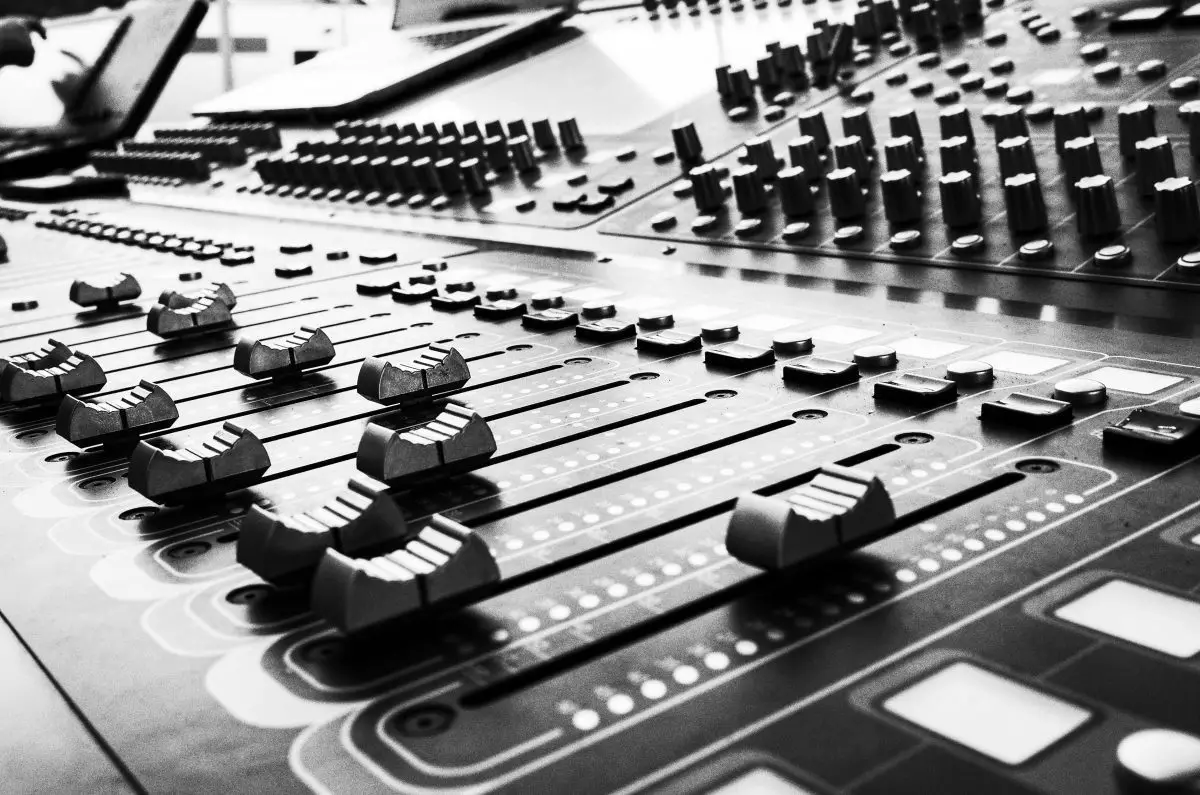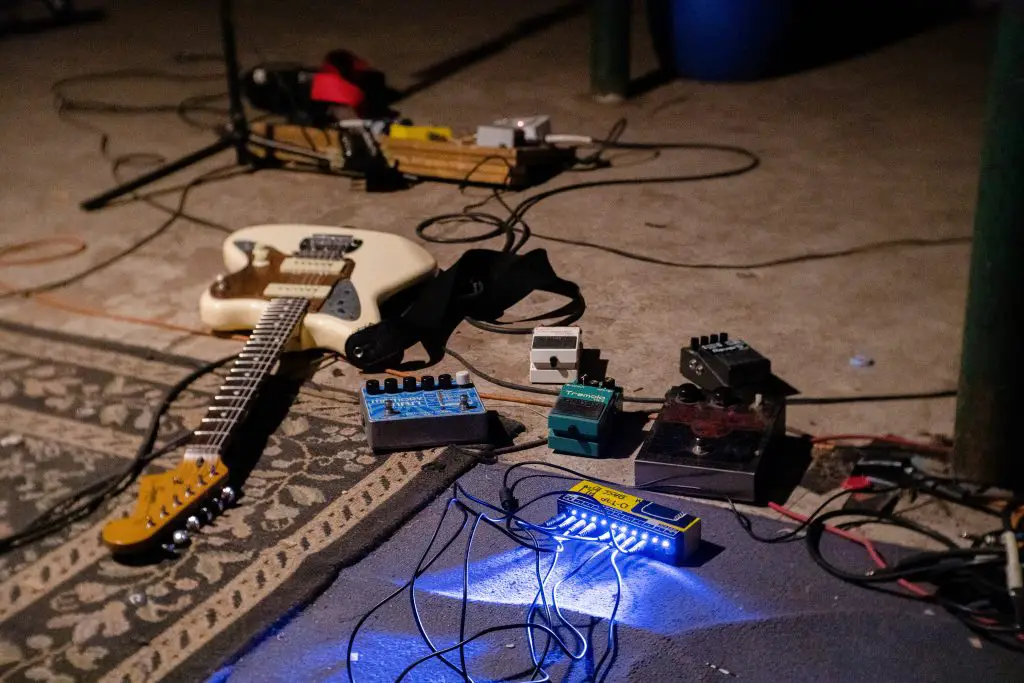Are you ready to take your music production skills to the next level? Whether you’re a beginner or a seasoned pro, there’s always something new to learn about audio effects. And today, we’re diving deep into the world of the chorus effect. But don’t worry; we won’t leave you feeling lost in a sea of technical jargon.
Instead, we’re going to break down the ins and outs of the chorus effect in a way that any beginner could understand. By the end of this post, you’ll know how to create, apply, and master chorus effects in your own music. So, grab your headphones, and let’s get started.
What is a chorus effect? A chorus effect is a type of audio effect that creates a thicker, more spacious sound by duplicating the original signal and altering its pitch, timing, and amplitude. It’s commonly used in music production to add depth and richness to vocals, guitars, and other instruments.
How does the chorus effect work?
Making a copy (or numerous copies) of a signal, altering its period (pitch), and mixing the modulated copies with the original signal produces a chorus effect. A chorus effect creates minor pitch variations by modulating the waveform’s delay time with a low-frequency oscillator (LFO).

The timing mismatches generate a fluctuating phase shift between the original and replicated signals. Furthermore, the longer delay durations of phasers and flangers result in slow changes in the frequency of the final signal, which causes variations in the pitch of the copy.
A slower speed or rate produces a mild chorusing effect, whereas a quicker speed or rate produces more phase-shifting and perceived pitch modulations of the original signal. In addition, choruses have far longer delay durations than flangers, resulting in a sound that is less like a comb filter and more like two signals layered.
AKAI Professional MPK Mini MK3

AKAI Professional MPK Mini MK3
How is the chorus effect used in music?
Chorus effect can be used in various ways in music production to add depth, width, and texture to different instruments and sounds. Some of the different ways the chorus effect can be used are:
- Adding richness to vocals and harmonies
- Creating a wider stereo image for guitars and keyboards
- Emulating the sound of a choir or ensemble
- Making synth sounds more interesting and dynamic
- Adding movement to pads and ambient textures
- Creating a dreamy, ethereal atmosphere in a song
- Enhancing the sound of acoustic instruments like piano and strings
- Creating unique and experimental effects in electronic music.

What are the techniques to create the chorus effect?
The chorus effect is a popular audio effect used to add depth, thickness, and spatial wideness to sounds. It can be applied to various elements in a mix, such as pads, vocals, guitars, and synths, to create a more immersive and textured sound. Here are some techniques commonly used to create the chorus effect:
1. Feedback and depth control
Adjusting the feedback and depth parameters of a chorus effect unit or plugin allows you to control the intensity and character of the effect. Higher feedback settings can produce more pronounced and wilder sonic effects, while lower settings create subtle and smoother results.
2. Independent channel control
Using a chorus plugin that enables independent control over the left and right channels can help create a wider stereo image. By selecting different settings for each channel, you can generate the impression of width, making the mixed elements sound more spacious.
Adding a touch of the chorus to dull sounds, such as organs, synth strings, or acoustic guitars, can provide a little polish and richness.
3. Double-tracking
When recording vocals, a technique called double-tracking is often used to add richness and depth to the vocal sound. It involves recording an identical performance of the same vocal, which can then be subtly chorused to enhance the overall texture.
4. Polishing and enriching dull sounds
Adding a touch of the chorus to dull sounds, such as organs, synth strings, or acoustic guitars, can provide a little polish and richness. However, it’s important to be cautious when using a chorus on sparse mixes, as too much can be obvious and overwhelming. The effect can be more pronounced in busier mixes.
5. Creating depth in the mix
Chorus can be employed to position elements further back in the mix. It slightly reduces the distinctness of sounds, making them appear farther away and adding a sense of depth. However, it’s crucial to use this aspect of chorus intelligently, as it may result in a loss of mix clarity.
These techniques can be employed using dedicated chorus effect units or chorus plugins within digital audio workstations (DAWs). By experimenting with different settings and applying chorus appropriately, you can achieve the desired spatial and textural enhancements in your audio productions.
Advantages and disadvantages of using the chorus effect
Like any audio effect, the chorus effect has its advantages and disadvantages. It is a creative tool that should be used intentionally and thoughtfully. Understanding its advantages and disadvantages can help you make informed decisions when applying the effect to your audio productions.
Pros (Advantages)
The chorus effect offers several advantages that make it a valuable tool in audio production:
- Widening the soundstage: The chorus effect can create a wider and more spacious sound by duplicating the original signal and modulating it slightly. This helps to fill out the stereo field and make the audio feel more immersive.
- Enhancing depth and richness: By adding multiple delayed and pitch-modulated copies of the original signal, the chorus effect can make the audio sound thicker and more full-bodied. It adds a sense of depth and richness to the sound, especially for instruments like guitars, keyboards, and vocals.
- Creating a sense of movement: The subtle variations in pitch and time produced by the chorus effect create the illusion of movement in the audio. This can be particularly useful for adding life to static or monotonous sounds, making them more dynamic and interesting.
- Emulating ensemble performances: The chorus effect can mimic the sound of a group of instruments or singers playing or singing together. It simulates the slight differences in timing and pitch that naturally occur in an ensemble, resulting in a more realistic and organic sound.
- Adding character and texture: The chorus effect has a distinct tonal quality that can add character and texture to the audio. It can be used to create shimmering, swirling, or ethereal sounds that evoke specific moods or atmospheres.
Cons (Disadvantages)
While the chorus effect can be a valuable tool in audio production, it also has some potential drawbacks that should be considered:
- Loss of clarity: Applying a chorus effect excessively or on certain audio elements can lead to a loss of clarity. The multiple delayed and modulated signals can blur the original audio, making it less distinct and harder to distinguish individual elements in the mix.
- Phase cancellation issues: Improper use of the chorus effect, especially with stereo signals, can introduce phase cancellation issues. This occurs when the phase relationships between the original signal and the chorus effect signals interfere with each other, resulting in a thin or hollow sound.
- Artificial or unnatural sound: The chorus effect, if overused or applied incorrectly, can make the audio sound artificial or unnatural. It’s important to use the effect judiciously and consider the context and desired outcome to avoid creating an unrealistic sonic impression.
- Increased mix complexity: When using the chorus effect on multiple tracks or instruments in a mix, it can increase the overall complexity of the mix. This may require additional attention during the mixing process to ensure that the various chorus effects work harmoniously together and do not overshadow or clash with other elements.
- Limited suitability for all genres: While the chorus effect is widely used in many genres of music, it may not be suitable for every musical style or production. Some genres, such as minimalist or clean productions, may not benefit from the added modulation and movement that the chorus effect provides.
Tips on using the chorus effect
Achieving the desired chorus effect sound requires attention to detail and experimentation. Here are some tips to help you achieve the desired sound:
- Start with a clean and well-balanced sound before adding a chorus effect.
- Adjust the rate and depth of the chorus effect to create the desired texture and movement.
- Experiment with different types of chorus effects and modulation sources to achieve unique sounds.
- Use EQ and filtering to shape the sound and prevent it from becoming too muddy or harsh.
- Use automation to create subtle variations in the chorus effect over time.
- Be mindful of the stereo image and ensure that the chorus effect doesn’t create phase cancellation or stereo imbalance.
- Compare your chorus effect sound with reference tracks to ensure that it fits the desired style and genre of music.
If you want even more tips and insights, watch this video called “What is Chorus? | How To Use Chorus Effect?” from the This Is Onesto YouTube channel.
Conclusion
It’s been a wild ride, folks! We’ve explored the ins and outs of the chorus effect, from its definition and history to the different techniques and tips for achieving the desired sound. But before we go, I have to ask: are you feeling a little more in tune with the world of audio effects? And did I cover everything you wanted to know? Let me know in the comments below! I read and reply to every comment.
As for me, I’m just glad we could all come together and nerd out about the chorus effect for a while. It’s a beautiful thing when people can unite over a shared passion, even if that passion is making guitars sound like they’re underwater. And who knows, maybe with enough practice, we’ll all be able to create the perfect chorus effect sound.
In the meantime, don’t forget to share this article with a friend and check out my full blog for more tips and tricks on music production. Thanks for reading, and keep on groovin’!
Key takeaways
This article covered what a chorus effect is. Here are some key takeaways:
- A chorus effect is a type of audio effect that creates a thicker, more spacious sound.
- The effect is created by duplicating the original signal and altering its pitch, timing, and amplitude.
- There are various types of chorus effects, including analog chorus, digital chorus, and ensemble chorus.
- The chorus effect can be used in various ways to add depth, width, and texture to different instruments and sounds.
- To achieve the desired chorus effect sound, attention to detail and experimentation are key.
- Tips for achieving the desired sound include starting with a clean sound, adjusting the rate and depth, and using automation to create subtle variations over time.















